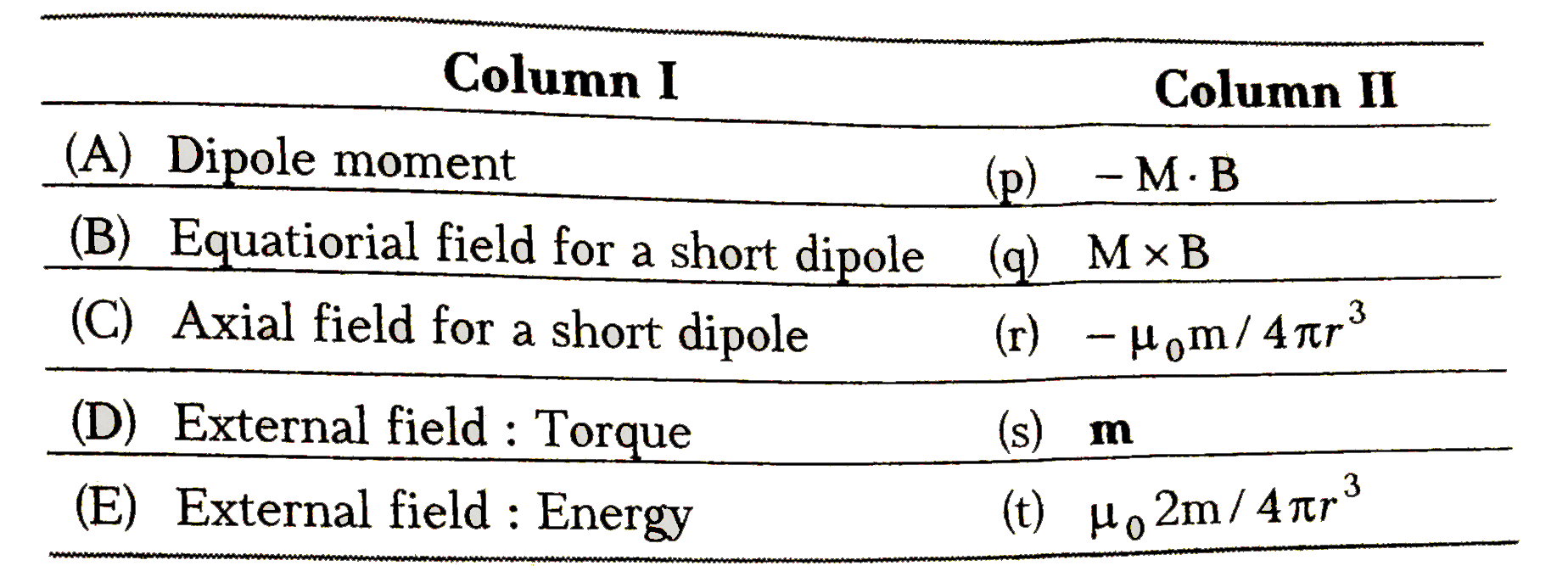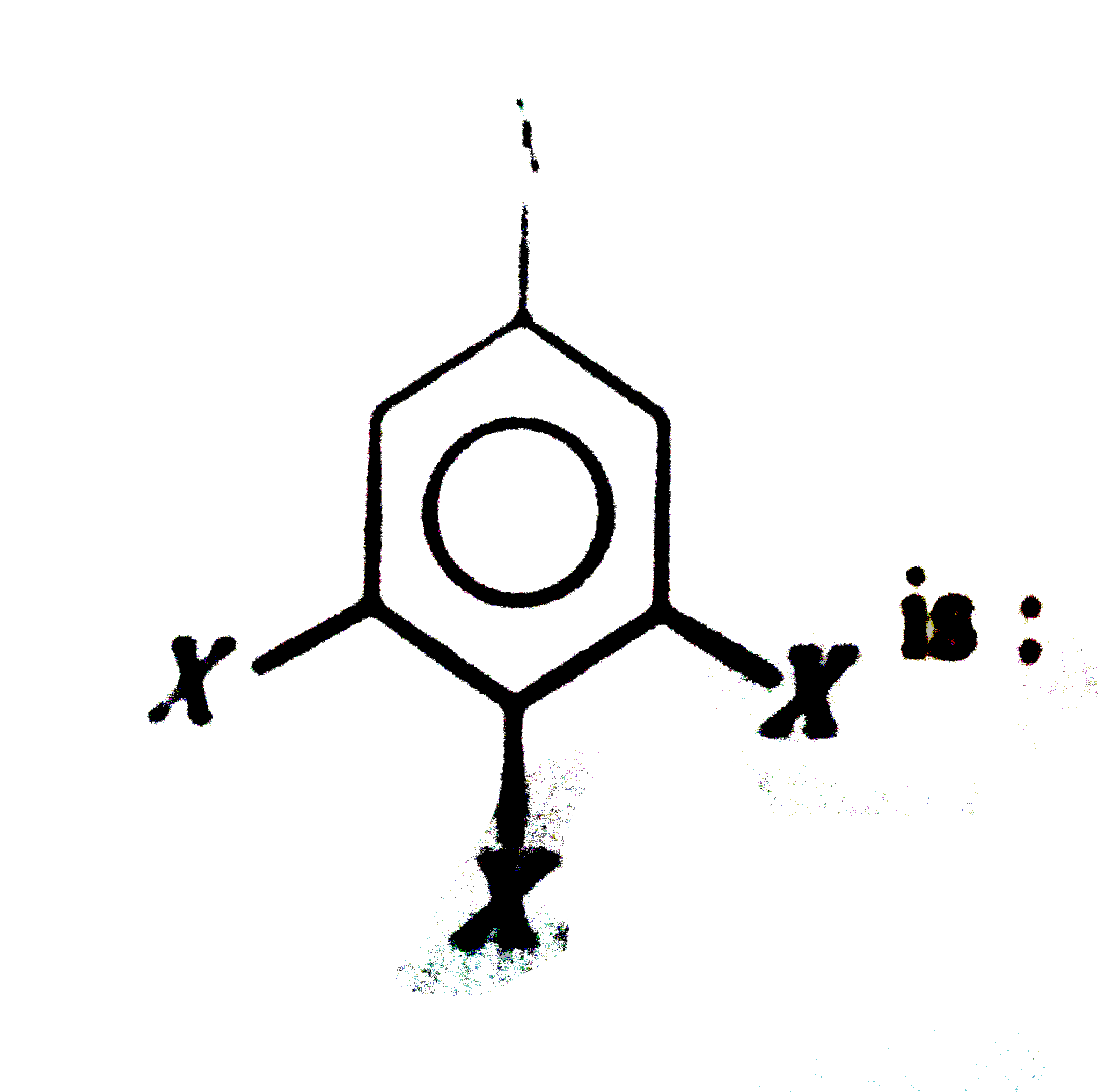Polar covalent molecules exhibit dipole moment. Dipole moment is equal to the product of charge separation , q and the bond length d for the bond. Unit of dipole moment is debye. One debye is equal to 10−18 esu cm.
Dipole moments is a vector quantity. It has both magnitude and direction. Hence, dipole moment of a molecule depends upon the relative orientation of the bond dipoles, but not on the polarity of bonds alone. A symmetrical structure shows zero dipole moment. Thus, dipole moment helps to predict the geometry of a molecules. Dipole moment values can be distinguish between cis- and trans- isomers, ortho, meta and pare-forms of a substance, etc.
Q. Arrange the following compounds in increasing order of dipole moments, toluene (I), o-dichlorobenzene (II), m-dichlorobenzene (III) and p-dichlorobenzene (IV) :
IV<I<II<III
I<IV<II<III
IV<I<III<II
IV<II<I<III
The correct Answer is:C
To arrange the compounds toluene (I), o-dichlorobenzene (II), m-dichlorobenzene (III), and p-dichlorobenzene (IV) in increasing order of dipole moments, we can follow these steps:
Step 1: Understand the Structures
- Toluene (I): Contains one methyl group (-CH₃) attached to a benzene ring. It has a slight dipole moment due to the presence of the methyl group.
- o-Dichlorobenzene (II): Contains two chlorine atoms on adjacent carbons of the benzene ring. The dipole moments of the two C-Cl bonds add up because they are at an angle (approximately 60°).
- m-Dichlorobenzene (III): Contains two chlorine atoms on carbons that are separated by one carbon. The dipole moments of the two C-Cl bonds are at an angle of approximately 120°.
- p-Dichlorobenzene (IV): Contains two chlorine atoms on opposite sides of the benzene ring. The dipole moments cancel each other out, resulting in a net dipole moment of zero.
Step 2: Analyze the Dipole Moments
- p-Dichlorobenzene (IV): Since the dipole moments cancel out, the dipole moment is 0.
- m-Dichlorobenzene (III): The angle between the dipole moments is 120°, leading to a moderate dipole moment.
- o-Dichlorobenzene (II): The angle between the dipole moments is 60°, which results in a larger dipole moment than m-dichlorobenzene.
- Toluene (I): Has a small dipole moment due to the presence of the methyl group, but it is less than that of o-dichlorobenzene.
Step 3: Arrange in Order
Based on the analysis:
1. p-Dichlorobenzene (IV): Dipole moment = 0 (lowest)
2. Toluene (I): Slightly polar, small dipole moment.
3. m-Dichlorobenzene (III): Moderate dipole moment.
4. o-Dichlorobenzene (II): Highest dipole moment due to the angle of 60°.
Final Order
Thus, the increasing order of dipole moments is:
p-Dichlorobenzene (IV) < Toluene (I) < m-Dichlorobenzene (III) < o-Dichlorobenzene (II)
Answer:
p-Dichlorobenzene (IV) < Toluene (I) < m-Dichlorobenzene (III) < o-Dichlorobenzene (II)
---
- Toluene (I): Contains one methyl group (-CH₃) attached to a benzene ring. It has a slight dipole moment due to the presence of the methyl group.
- o-Dichlorobenzene (II): Contains two chlorine atoms on adjacent carbons of the benzene ring. The dipole moments of the two C-Cl bonds add up because they are at an angle (approximately 60°).
- m-Dichlorobenzene (III): Contains two chlorine atoms on carbons that are separated by one carbon. The dipole moments of the two C-Cl bonds are at an angle of approximately 120°.
- p-Dichlorobenzene (IV): Contains two chlorine atoms on opposite sides of the benzene ring. The dipole moments cancel each other out, resulting in a net dipole moment of zero.
- p-Dichlorobenzene (IV): Since the dipole moments cancel out, the dipole moment is 0.
- m-Dichlorobenzene (III): The angle between the dipole moments is 120°, leading to a moderate dipole moment.
- o-Dichlorobenzene (II): The angle between the dipole moments is 60°, which results in a larger dipole moment than m-dichlorobenzene.
- Toluene (I): Has a small dipole moment due to the presence of the methyl group, but it is less than that of o-dichlorobenzene.
Based on the analysis:
1. p-Dichlorobenzene (IV): Dipole moment = 0 (lowest)
2. Toluene (I): Slightly polar, small dipole moment.
3. m-Dichlorobenzene (III): Moderate dipole moment.
4. o-Dichlorobenzene (II): Highest dipole moment due to the angle of 60°.
Thus, the increasing order of dipole moments is:
p-Dichlorobenzene (IV) < Toluene (I) < m-Dichlorobenzene (III) < o-Dichlorobenzene (II)
p-Dichlorobenzene (IV) < Toluene (I) < m-Dichlorobenzene (III) < o-Dichlorobenzene (II)
Topper's Solved these Questions
- CHEMICAL BONDING (ADVANCED)BOOK - VK JAISWAL ENGLISHCHAPTER - CHEMICAL BONDING (ADVANCED)EXERCISE - ONE OR MORE ANSWER IS/ARE CORRECT
78 Videos
- CHEMICAL BONDING (ADVANCED)BOOK - VK JAISWAL ENGLISHCHAPTER - CHEMICAL BONDING (ADVANCED)EXERCISE - MATCH THE COLUMN
21 Videos
- CHEMICAL BONDING (ADVANCED)BOOK - VK JAISWAL ENGLISHCHAPTER - CHEMICAL BONDING (ADVANCED)EXERCISE - Level 2
150 Videos
- CHEMICAL BONDING (BASIC)BOOK - VK JAISWAL ENGLISHCHAPTER - CHEMICAL BONDING (BASIC)EXERCISE - SUBJECTIVE PROBLEMS
54 Videos
Similar Questions
Polar covalent molecules exhibit dipole moment. Dipole moment is equal to the product of charge separation , q and the bond length d for the bond. Unit of dipole moment is debye. One debye is equal to 10−18 esu cm.
Dipole moments is a vector quantity. It has both magnitude and direction. Hence, dipole moment of a molecule depends upon the relative orientation of the bond dipoles, but not on the polarity of bonds alone. A symmetrical structure shows zero dipole moment. Thus, dipole moment helps to predict the geometry of a molecules. Dipole moment values can be distinguish between cis- and trans- isomers, ortho, meta and pare-forms of a substance, etc.
Q. Which is a polar molecule?
View SolutionPolar covalent molecules exhibit dipole moment. Dipole moment is equal to the product of charge separation , q and the bond length d for the bond. Unit of dipole moment is debye. One debye is equal to 10−18 esu cm.
Dipole moments is a vector quantity. It has both magnitude and direction. Hence, dipole moment of a molecule depends upon the relative orientation of the bond dipoles, but not on the polarity of bonds alone. A symmetrical structure shows zero dipole moment. Thus, dipole moment helps to predict the geometry of a molecules. Dipole moment values can be distinguish between cis- and trans- isomers, ortho, meta and pare-forms of a substance, etc.
Q. Which is a polar molecule?
View SolutionPolar covalent molecules exhibit dipole moment. Dipole moment is equal to the product of charge separation , q and the bond length d for the bond. Unit of dipole moment is debye. One debye is equal to 10−18 esu cm.
Dipole moments is a vector quantity. It has both magnitude and direction. Hence, dipole moment of a molecule depends upon the relative orientation of the bond dipoles, but not on the polarity of bonds alone. A symmetrical structure shows zero dipole moment. Thus, dipole moment helps to predict the geometry of a molecules. Dipole moment values can be distinguish between cis- and trans- isomers, ortho, meta and pare-forms of a substance, etc.
Q. μ of the AX4 type of molecule is zero. The geometry of it can be :
View SolutionPolar covalent molecules exhibit dipole moment. Dipole moment is equal to the product of charge separation , q and the bond length d for the bond. Unit of dipole moment is debye. One debye is equal to 10−18 esu cm.
Dipole moments is a vector quantity. It has both magnitude and direction. Hence, dipole moment of a molecule depends upon the relative orientation of the bond dipoles, but not on the polarity of bonds alone. A symmetrical structure shows zero dipole moment. Thus, dipole moment helps to predict the geometry of a molecules. Dipole moment values can be distinguish between cis- and trans- isomers, ortho, meta and pare-forms of a substance, etc.
Q. Which of the following statement is correct regarding C2H2F2 molecule?
View SolutionPolar covalent molecules exhibit dipole moment. Dipole moment is equal to the product of charge separation , q and the bond length d for the bond. Unit of dipole moment is debye. One debye is equal to 10−18 esu cm.
Dipole moments is a vector quantity. It has both magnitude and direction. Hence, dipole moment of a molecule depends upon the relative orientation of the bond dipoles, but not on the polarity of bonds alone. A symmetrical structure shows zero dipole moment. Thus, dipole moment helps to predict the geometry of a molecules. Dipole moment values can be distinguish between cis- and trans- isomers, ortho, meta and pare-forms of a substance, etc.
Q. A diatomic molecule has a dipole moment of 1.2D. If the bond length is 1.0×10−8 cm, what fraction of charge does exist each atom?
View SolutionThe correct order of dipole moment is :
View SolutionWith reference to magnetic dipole, match the tems of Column I with the tems of Column Ii and Choose the correct option from the codes given below.

View SolutionZero dipole moment is present in
View SolutionDipole moment is shown by
View SolutionDipole moment of
 is 1.5D. The dipole moment of
is 1.5D. The dipole moment of

View Solution
